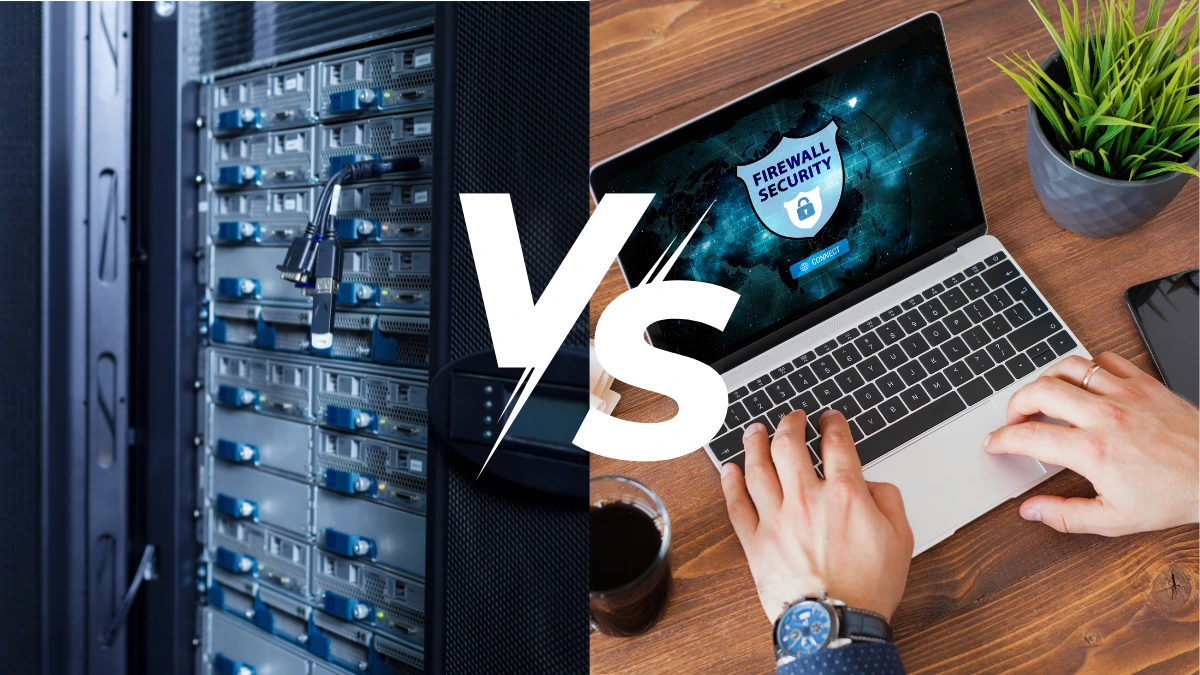Hardware firewalls and software firewalls are the keys to guard and control incoming and outgoing data traffic. Although both maximize network security, hardware firewall vs software have some significant differences.
The differences between hardware firewall vs software cover several aspects such as funcion, form, location, advantages and disadvantages.
This article will delve into the important differences between hardware firewall vs software to provide a good network security.
Also Read
Table of Contents
What is a Hardware Firewall?

Hardware firewalls are physical devices designed to guard and control incoming and outgoing data traffic. Unlike software installed on a computer, this hardware operates independently of the computer it protects.
It acts as a gatekeeper between internal and external networks that prevents sensitive data from cyberattacks and unauthorized data from entering the network.
As a device whose main purpose is to improve network security, firewall hardware is placed between the internal network and the internet, such as in a router or network gateway.
What is a Software Firewall?

Firewall software is software that is used as a shield that monitors computer network traffic against the Internet. This device is installed on the computer you want to secure.
Firewall software will allow or block every incoming and outgoing data packet, so that the installed device will be protected from threats such as viruses, malware, hackers, and other network attacks.
The Difference between Hardware Firewall vs Software

True hardware firewalls and software firewalls are both used to guard and control incoming and outgoing data traffic, but they have some differences. Here are five fundamental differences between a hardware firewall vs software:
1. Function
Hardware firewall: To secure the network before it reaches individual devices by filtering data traffic.
Software firewall: To manage traffic coming in and out of the device on which it is installed.
2. Form
Hardware firewall: A physical hardware device that is separate from the user’s device.
Software firewall: In the form of a software application installed on the user’s computer device or server.
3. Location
Hardware firewall: The placement of this device is usually between the internal network and the internet, or behind the network router.
Software firewall: Placement of this device on the user device that you want to protect.
4. Advantages
Hardware firewall: Network-wide protection, prevents attacks before they reach user devices, can handle large traffic, and is more resistant to malware attacks.
Software firewall: Easier to install, more flexible, cheaper, and can be moved to other devices you want to protect.
5. Disadvantages
Hardware firewall: More expensive than software firewalls and more complex to maintain.
Software firewall: Limited protection, can strain resources on the system, requires regular updates.
That’s the difference between a hardware firewall vs software that can be a consideration in choosing one according to your personal needs.
If you need to protect the network for all devices in the house or office, a hardware firewall is a good choice. However, if you need to protect the network personally, you can choose a software firewall.











